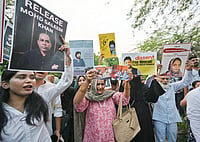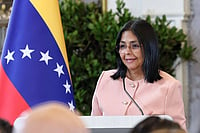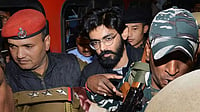This book on Indira Gandhi and her tryst with power is a reproduction of a 30-year-old book by Nayantara Sahgal, daughter of Vijayalaxmi Pandit, the sister Jawaharlal Nehru was close to and with whom he shared an enviable, and often interdependent, sibling relationship. It is on that recurring, underlying theme, which pops up much like a punctuation mark through the narrative, that the political trajectory of Indira Gandhi’s life has been woven into a book.
When it first appeared, it may have revealed some interesting insights and nuances about the ‘persona’ of Indira that had not been adequately written about. Coming from the memory and pen of a cousin who was Indira’s peer in what was seen as a close-knit family, one was looking for anecdotes and real examples that would illustrate traits and truths unknown to the public at large to reveal the more complex facets of the enigma that was Indira Gandhi.
What the book does do is take the reader on an interesting, carefully choreographed, walk through the major landmarks that littered Indira Gandhi’s adult life. It talks about the near-perfect relationship Nehru had with Vijayalaxmi Pandit, juxtaposed with the fractured one he had with Kamala, his wife and Indira’s mother. Small wonder then that Indira had a polite, gracious and ‘cold’ response to her cousins and their mother. Family ‘rivalry’, even if latent, can have a devastating impact on a child who feels unanchored and alone, particularly when all around her are endless cousins and their brothers and sisters. In that context, one would have liked the author to have delved deeper into the fragile and complex psyche of a young Indira, struggling to feel comfortable in her ‘social’ space, that other writers dealing with the same subject would have found difficult to do. Those personal contortions are glossed over and not assessed in the context of her private life or her political avatar.
When the Indira-led Congress split, it was a conscious act and required a certain political acumen. It did not ‘just’ happen because events moved in a way that compelled it. Chances are, she led the movement towards a clear split. Were her ‘advisors’ and members of her ‘kitchen cabinet’ plotting the steps, or did she mastermind the move to win their unfettered loyalty and unquestioned support that enabled her to have the confidence to rule with a minority government? It is that kind of ‘information and insight’ that this book lacks. How did Indira’s mind work? Did she believe in stalwart political families and therefore endorse politics as a family profession? How was she different (or not) from her father in this aspect? After all, post-Independence, Jawaharlal Nehru appointed his sister as high commissioner and ambassador to crucial and important countries, despite the fact that she was not from the foreign office cadre. It is those contradictions, along with the profound respect Nehru had for democracy and its processes and mechanisms, that needed greater elaboration.
Was Indira Gandhi repentant of her frightful decision to impose a state of internal emergency when the reality on the ground did not merit such a draconian move? It is obvious and easy to damn her for doing what she did—for many of us, an unforgivable and unnecessary act, but it would have been hugely interesting to have had a better understanding of the personal and political ramifications within her mind that motivated her to go against her DNA and assault the very foundation of her upbringing, her body and soul. That is missing in each phase of her life story. There are those who believe that she, independently and without pressure from anyone except her ‘inner voice’, decided to make the call for post-Emergency elections. That she would win or lose was secondary. It would have added much value to the narrative if the author had posed some questions about the announcement, its timing. What was happening in the sanctum sanctorum that could have triggered the announcement?
For a life as complex and riveting as Indira Gandhi’s, an extraordinary yet simple woman born into India’s first family of democratic politics, it needs many dimensions, edges and layers for a biography to do full justice to it.
But for those who did not live through that period, who have not waded through endless books on the subject, this is an accessible narrative that compellingly portrays the top-most layer of a remarkable woman.
(The reviewer is the publisher of Seminar)


























